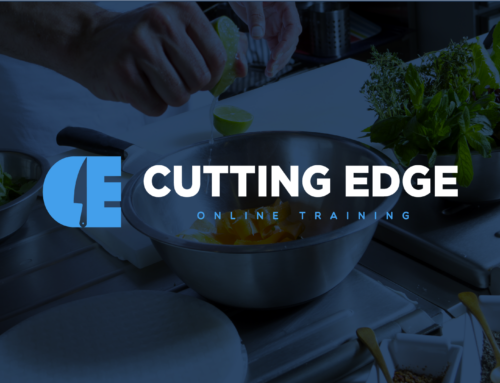Dealer thought leaders from the Excell buying group share ways to cope with supply chain issues caused by the COVID-19 pandemic.
The COVID-19 pandemic brought with it a raft of supply chain issues – from shortages of materials and workforce to dramatically increased freight costs, and container ships stuck in harbors delaying arrival of in-demand items to foodservice equipment dealers and operators alike. While these problems may still take much longer than anyone thought to unravel, the question is what can be done to ease their negative impact?
Members of the Excell Foodservice Equipment Dealer Network shared their thoughts on four key steps that can help relieve supply chain headaches and help both commercial kitchen equipment dealers and end-users get back to business.
1. Sourcing Product
Foodservice equipment, supplies, smallwares, tabletop and other products are available, but you must be flexible and nimble to get your hands on what you need. Here are a few ideas on how to find products in this market:
- Forecast your needs. “We rely heavily on forecasting existing customer usage by season, then by new client needs,” says Justin Ahearne, Director of Sales, BBC Distributing, Grand Rapids, Mich. “We create a list of items we need and will buy appropriately when it becomes available.”
- Stock up. “We have not run into shortages yet,” says Jamie Wilson, Co-Owner, Wilson Restaurant Supply, Cedar Falls, Iowa. “We just run down the list of what we need, and while I would not normally buy a quantity of 50 of something, we will do it on certain items. We have room, or we will make room.”
- Expand your supplier list. “We expanded the number of manufacturers we buy from in each category from two or three to four or five, so we have backups,” Wilson says. “Refrigeration is our category with the largest number of suppliers because of long lead times.”
- Loosen your specs. Where you would normally spec only a 40-lb. fryer, you may have to sub in a 50-lb. fryer if that is what is available, Ahearne suggests. Just make sure the dimensions are the same, or give yourself enough time to change drawings to reflect new commercial kitchen equipment specs.
- Utilize nontraditional sources. “We have had to go to other dealers to source some products to fill a need on the client side,” says Todd Hatch, Principal, Hatch Design Group and Ikonic Supply Co., Costa Mesa, Calif. BBC Distributing also got creative with nontraditional sources. During the early months of the pandemic when toilet paper was in short supply, Ahearne and his staff relied on BBC’s sister company, KSS Enterprises, to help source foodservice equipment product and ended up stocking and selling retail, rather than commercial, toilet paper.
- Use a buying group membership. “Membership in buying groups like Excell helps facilitate relationships across the nation,” Hatch says. “Because of these relationships, my buying group community has been integral in helping my business to secure products that would otherwise be in short supply.”
When going to the manufacturer is not an option, Excell’s online foodservice equipment dealer group member bulletin board allows dealers a non-traditional method to lean on group relationships to source the products they need. Additionally, this tool facilitates trusting relationships, resulting in a supportive community of likeminded restaurant equipment dealers willing to share ideas and learnings.
– Todd Hatch, Hatch Design Group and Ikonic Supply Co.

2. Build in Lead Times
Lead times vary depending on the category and the company of the commercial food equipment and supplies. “Most equipment is about four to eight weeks out,” Ahearne says. “Larger pieces, like a custom walk-in cooler, can be as much as a year, so we need a real commitment from the customer.”
“Our design-build projects can range from 16 to 28 weeks,” Hatch says, “so lead times have to be accurate to coordinate everything. Kitchen projects are even shorter, from eight to 12 weeks, and product must be there in a particular order at a specific time.”
Recognizing that lead times are a key component currently effecting foodservice equipment dealers in our group, Excell built a “Vendor Lead Times” tracker, exclusive for its members. This tool provides real-time access to lead times, helping dealers make more informed purchasing decisions.
Once there is an understanding of lead times, the key to ensuring those lead times remain firm is communication, commercial restaurant dealer members say. “We have to be very transparent with communication,” Hatch says. “We have worked hard to get contracts out fast enough that clients have a chance to commit, so vendors will, in turn, commit to lead times. We also do a better job of letting clients know that some costs like shipping are TBD, and we will honor quotes only for a certain length of time, from as little as 24 hours and up to two weeks.”

3. Communicate, Communicate, Communicate
Even when contracts are signed, communication with both clients and vendors is critical. Commercial restaurant equipment dealers typically assign inside sales staff the job of calling manufacturers daily to make sure lead times have not changed.
“Most manufacturers are pretty good about communicating with us,” Wilson says, “but some we have to call and call and email, so following up with them is a weekly thing for our project people. The first hour of the day, staff checks on purchase orders to see when products will arrive. We have a better handle communicating with both manufacturers and customers now that our staff is back in the office.”
When circumstances change—shipments are delayed, shipping costs increase, or a product simply is not available for some reason— “we communicate with our customers as soon as we know and offer alternatives,” says Ahearne.
4. Cultivate Relationships
As a result, dealers say they have gotten little pushback from customers due to delays, spec changes, or price increases because they understand how supply chain issues have affected the industry.
“It all goes back to transparency with customers,” Ahearne says. “We can offer this price today, but the manufacturer is likely to change the price in the next three months, so we prefer to offer customers several options. Or we can offer customers more services. We are providing a customer experience, not just a product, and we are physically there to talk to them and help them resolve problems and issues. But that service costs, and customers understand.”
Ultimately, dealers say their success in easing supply chain issues comes down to the relationships they have built with both manufacturers and customers, many of which they established through their membership in Excell.
Contact Us Today to Learn More.





